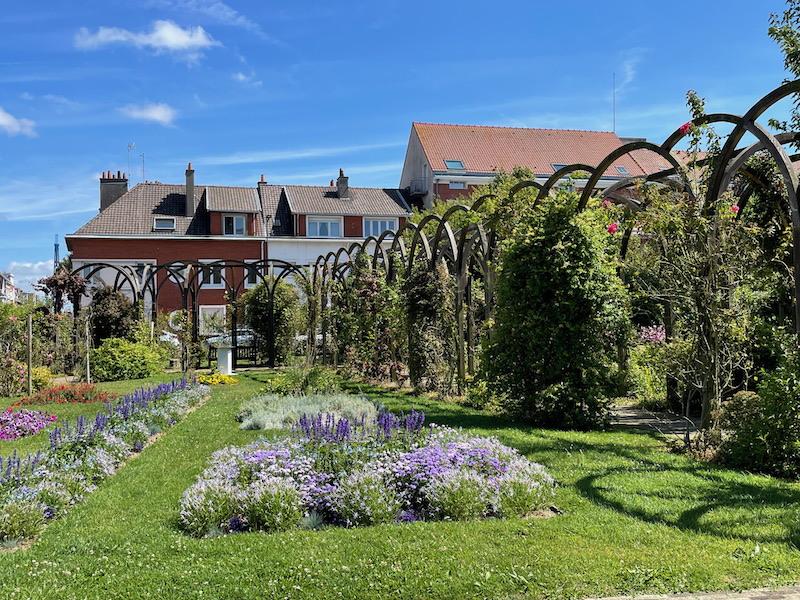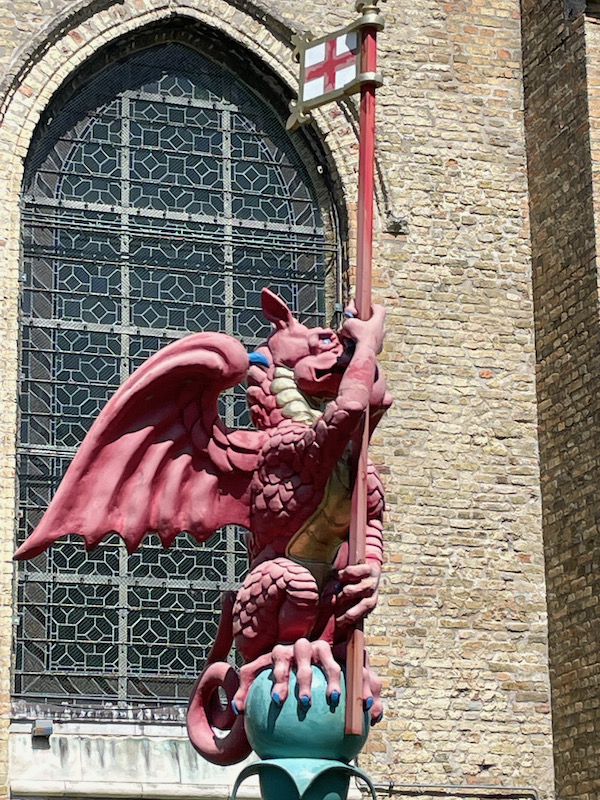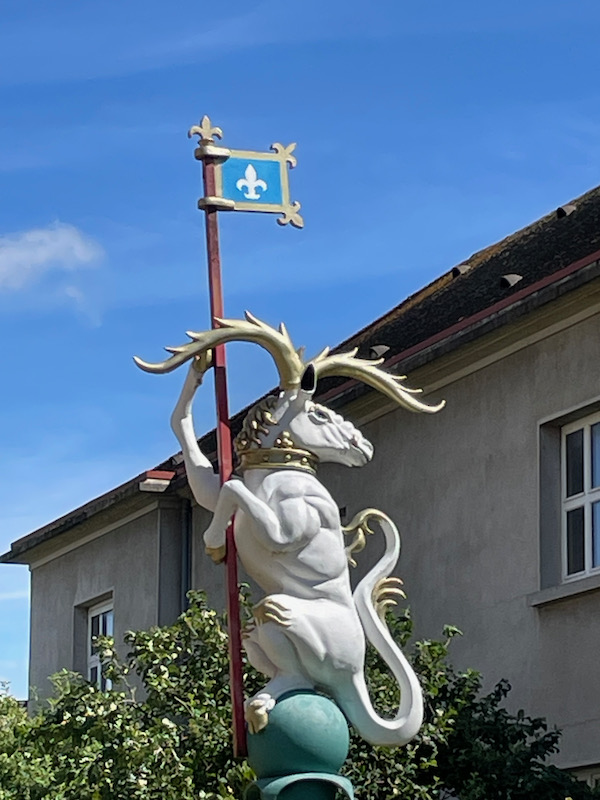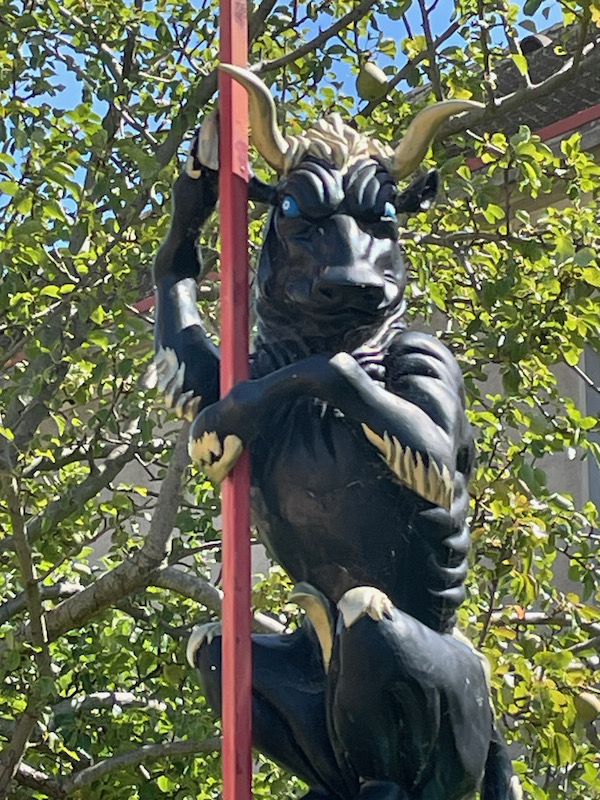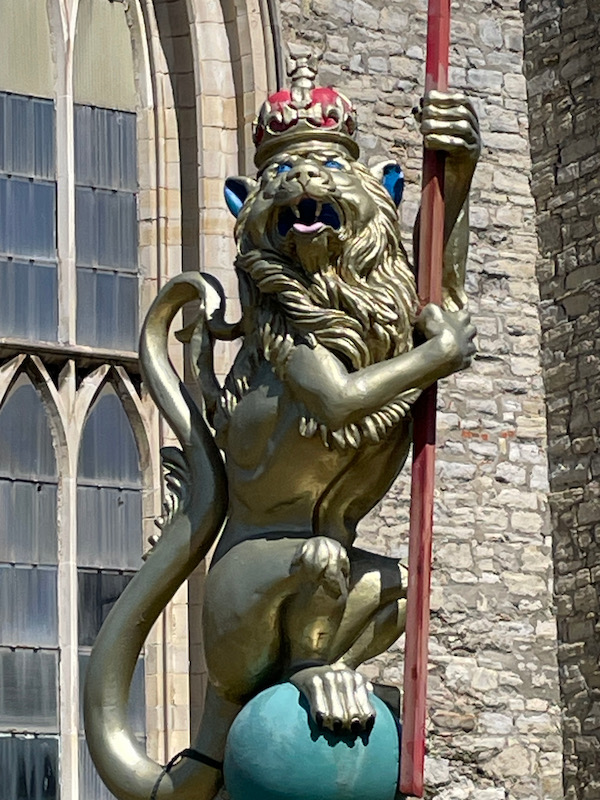Our Blog - Summer 2024 Trip - Calais, France
I was actually quite leery of going to Calais because of the bad press that the city had gotten during the "Calais Jungle", a refugee and immigrant encampment in the vicinity of Calais, France, that existed from January 2015 to October 2016. While there is no longer a camp like the Jungle in Calais, a sizable number of migrants are still present. Unfortunately, the Strait of Dover is the shortest point between England and mainland Europe, approximately 20 miles, and therefore, it is the most logical point for migrants attempting to enter the UK. But since we were staying nearby, we decided that we should at least go see if there was anything interesting.
It is the most populous city in the department but not the prefecture (the capital of the department). Its proximity to England makes Calais a strategic military location. The history of the city is marked by several sieges: a first in 1346 during the Hundred Years' War, where King Edward III of England chose Calais to land in France (the city then passing under English control), a second in 1436 when Philip the Good, Duke of Burgundy, attacked the English while seeking to liberate Calais, then a last one in 1558 when France finally succeeded in recovering the city which had remained for more than two centuries under English occupation. In 1595, Calais was captured by the Spanish who surrendered it two years later.
Calais was spared from World War I although it did get some damage from several German raids. But World War II was not nice to the city. Besieged twice in 1940 and 1944, it became a "forbidden zone", the Germans fearing a landing of allied forces in Pas-de-Calais. Just like its neighbors Boulogne and Dunkirk, the city ended up over 70% destroyed.
But Calais also played an important role in World War II with the "fake landing". Operation Fortitude was a military deception operation by the allies during the buildup to the 1944 Normandy landings. Basically, to draw German attention away from the "real" landings, the plan was to have a fictional building up troops in southern England, since landing at Calais was the most logical as it was the shortest crossing. The Allies wanted to create the impression that an invasion was aimed at the Calais area and slightly later in the year (July, instead of June).
In addition to the ferry terminal here, the French-side of the Channel Tunnel is in the Calais area (officially in Coquelles). Opened in 1994, the tunnel brought additional jobs, businesses, and new road and rail infrastructure. Every year, more than 10 million passengers pass through Calais on their way between England and France. I'll have a blog on the Channel Tunnel later, as we took the tunnel to England and back during this trip. For for now, we just spend a couple hours to see a few sites in the middle of town.
Charles De Gaulle, the former President of the Republic and Head of Free France, has a very special attachment to Calais. His wife, Yvonne, is from Calais and they were married in the city hall in 1921. The day after the "civil" marriage, the "religious" marriage took place in the Église Notre-Dame. On the main square, the Place d'Armes, there is a statue representing General de Gaulle walking on the arm of his wife, inspired by a visit by the presidential couple in 1959. In the same square, they have little water jets and large butterflies.
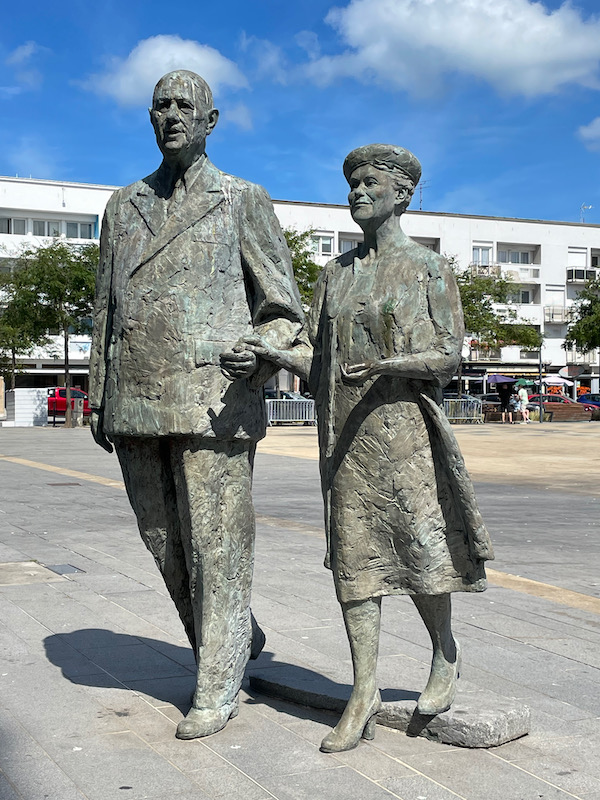
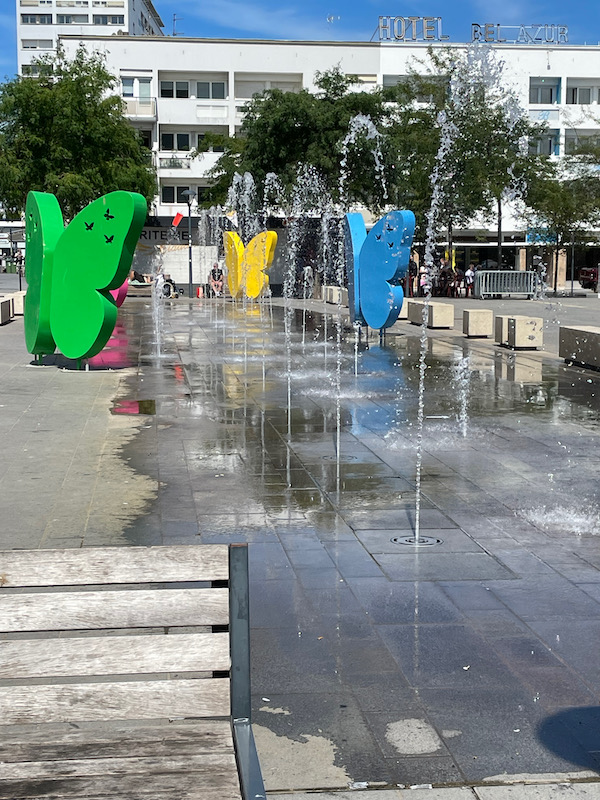
Officially dating from 1302, the Tour du Guet is probably one of the oldest monuments in town. I says "officially dating" from 1302 because some people believe that it is actually a fire tower that Charlemagne built in 810. In the 13th century, this was the center of a medieval castle. In 1580, an earthquake split the tower in two and it was "fixed" in 1606.
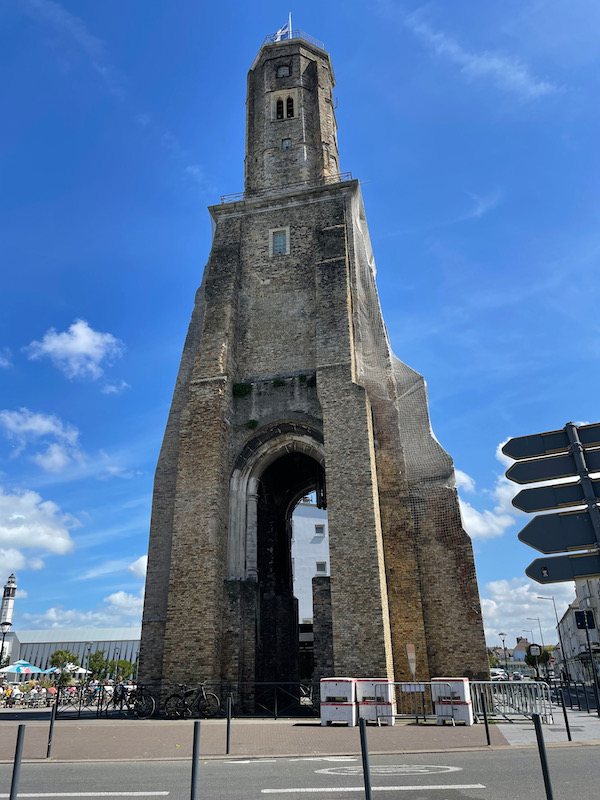
We were only able to see the top 2/3 of the Calais Lighthouse, as it it located in the port of Calais and we didn't go by there. It is 51 meters tall and was built in 1845. Originally with an oil light, it was electrified in 1883.
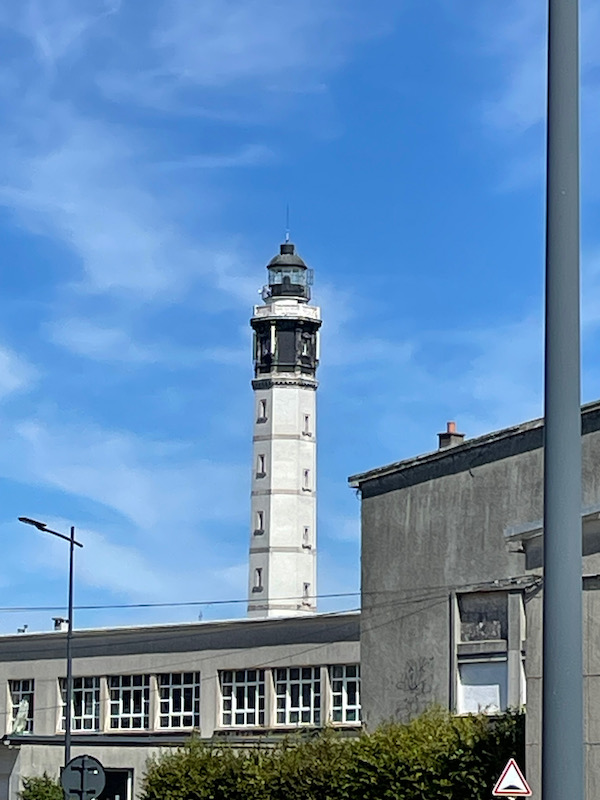
One of the streets leaving the Place d'Armes has these shiny hearts over the street.
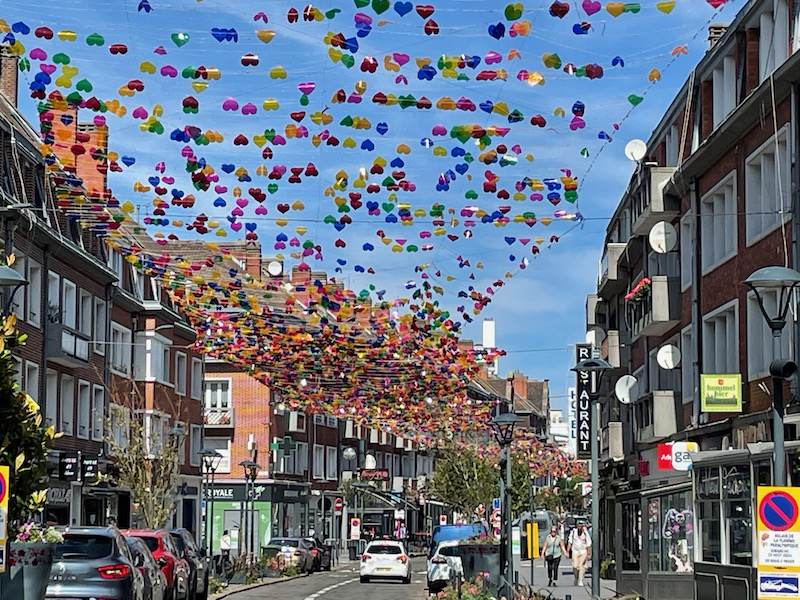
We only visited one church, the Église Notre-Dame. An earlier church was here in the early 13th century where the current transept is. It was damaged during the Hundred Years' War and rebuilt in the 2nd half of the 14th century, while the area was under English occupation. This is why it is mostly in Tudor architecture with a few hints of Gothic. It would grow in the 2nd half of the 15th century with the upper parts of the nave, the choir, and the bell tower. Another extension in the 17th century added the Chapel of the Virgin. Similar to other English-style churches we have seen, it has a bit of a fortress-like appearance. The Gothic hints that I mentioned were added in the end of the 19th century when neo-Gothic decoration work was added. I mentioned this before, but Charles de Gaulle and Yvonne Vendroux were married in the church in 1921. The main entry, the Saint-Pierre door, is flanked by 2 tall round towers.
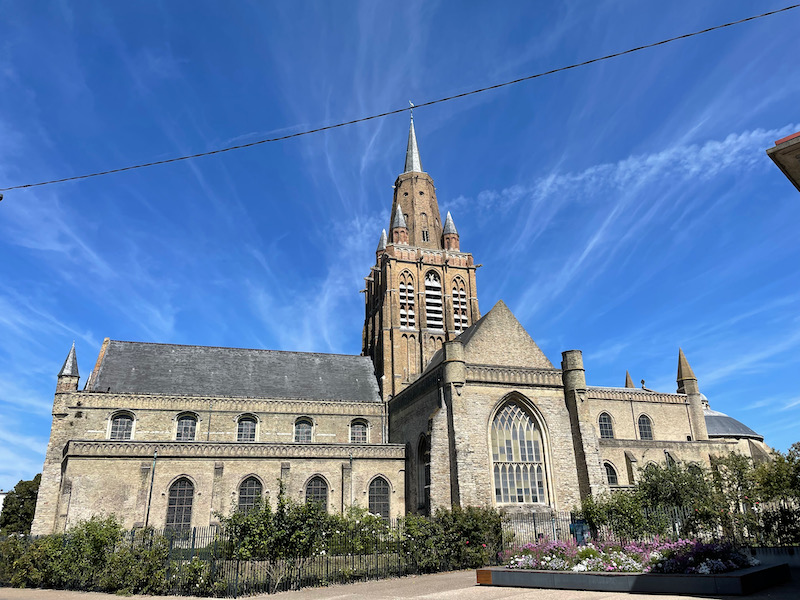
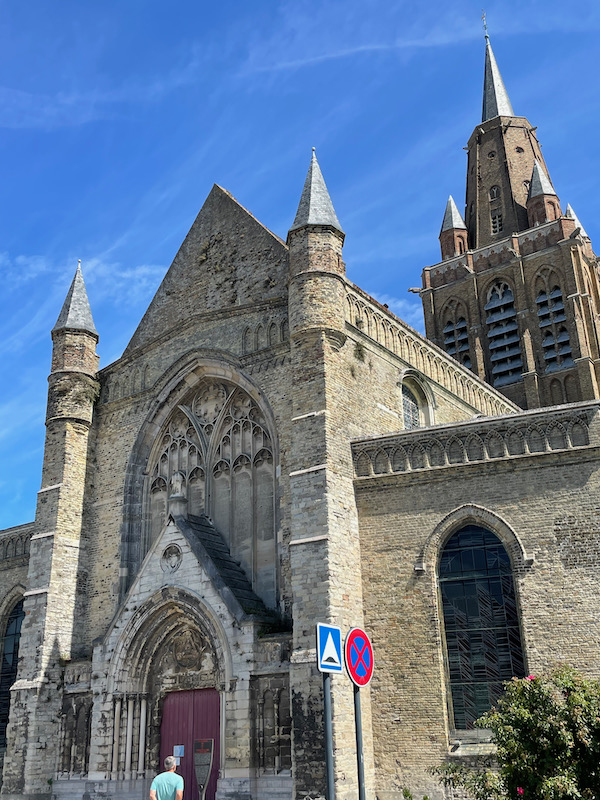
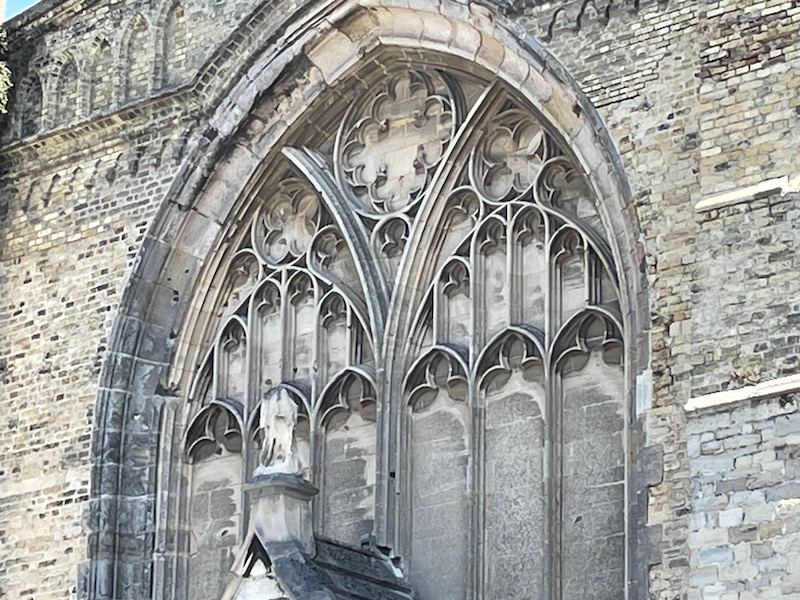
The wood-paneled vaults of the nave rest on cylindrical columns with Gothic arches. The baptismal font, dating from the 15th century, made of Soignies stone, was reassembled in 2005.
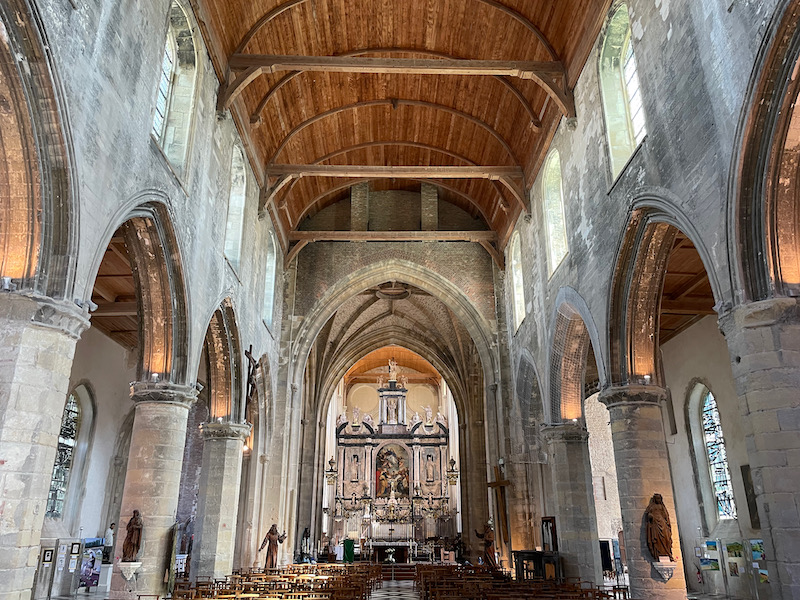
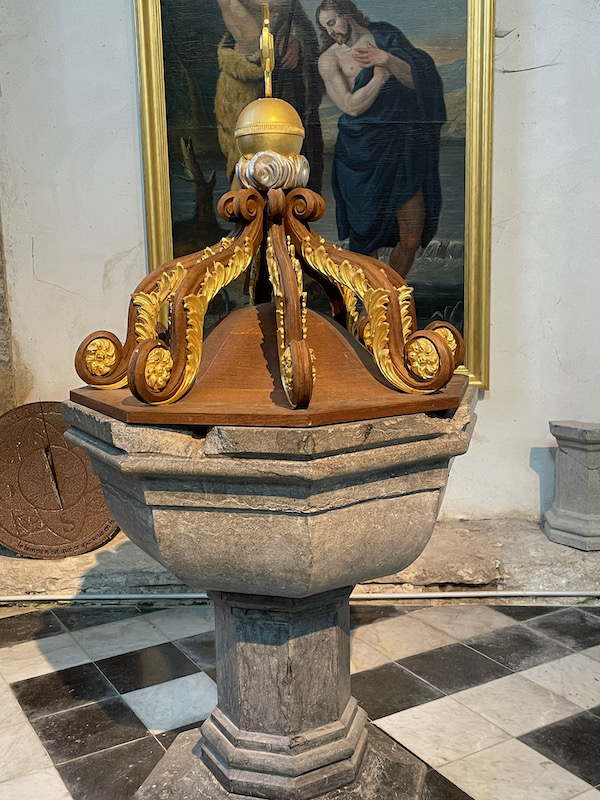
This is the oldest part of the church, where the original 13th century church was. It has the same type of ceiling but the small arches/niches built into the walls are unique here. The painting on the wall was done in the 19th century and depicts the taking of Calais by the Duke of Guise in 1558. Calais was ruled by England from 1347 until 1558 when 30,000 French troops under King Henry II and led by the Duke of Guise captured Calais during the winter.
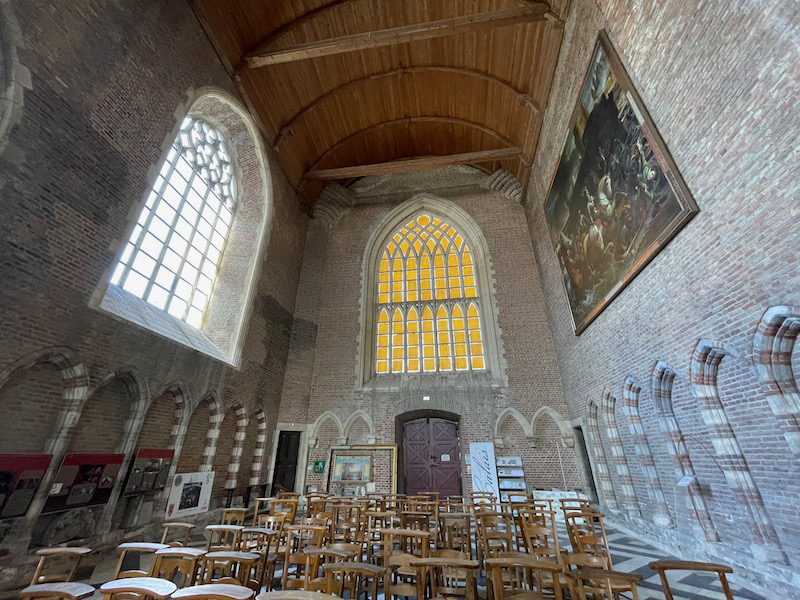
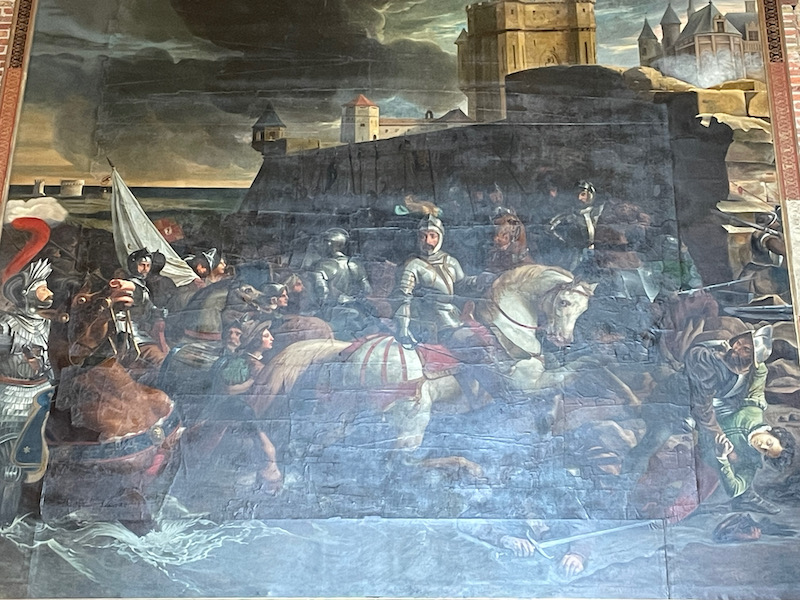
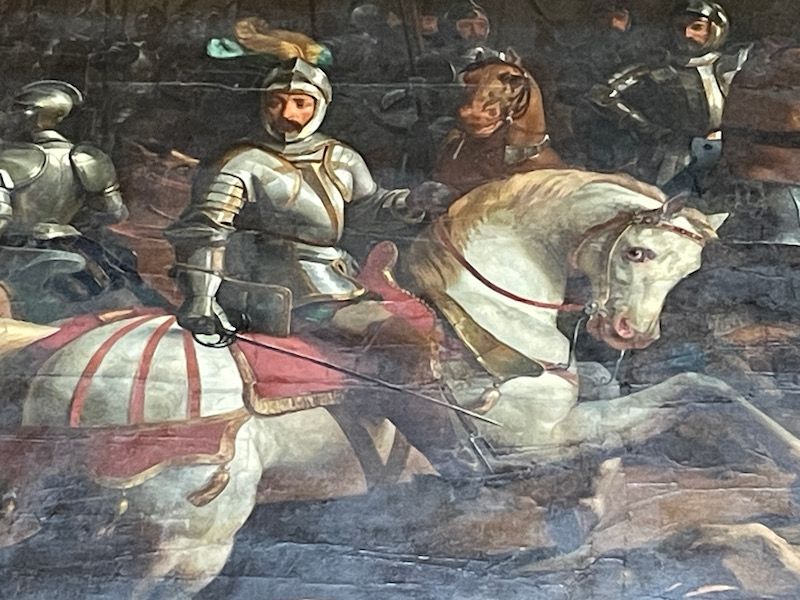
You can also see the side aisle here, also with the wooden ceiling but here, they are flat.

The grill that encloses the choir dates from 1782. It wasn't easy to get a good picture of the main altarpiece, which was done between 1626 and 1629 in a Baroque style of polychrome marble. At the top is a stone niche decorated with a sculpture of the Virgin and Child, surrounded by angels and allegories of Faith and Hope. On the base of the two side parts, are the statues of the four evangelists (and a close-up of Luke with the bull).
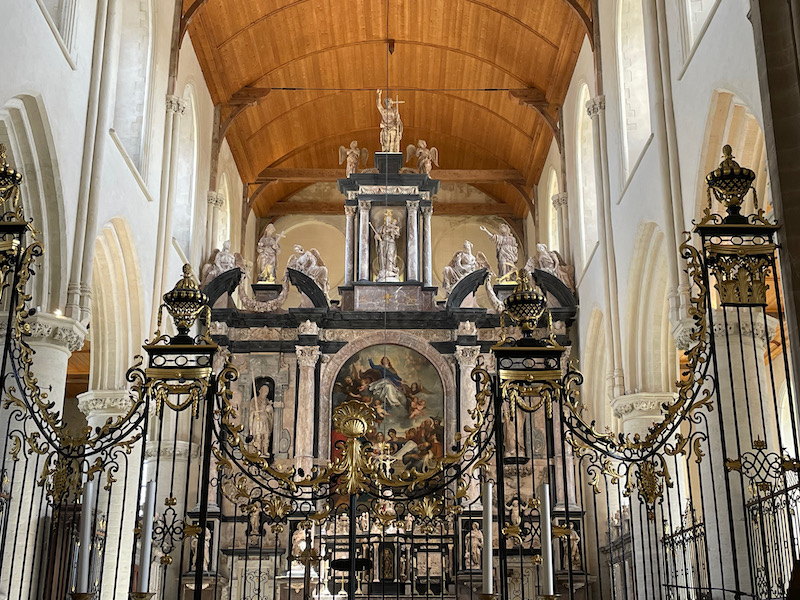
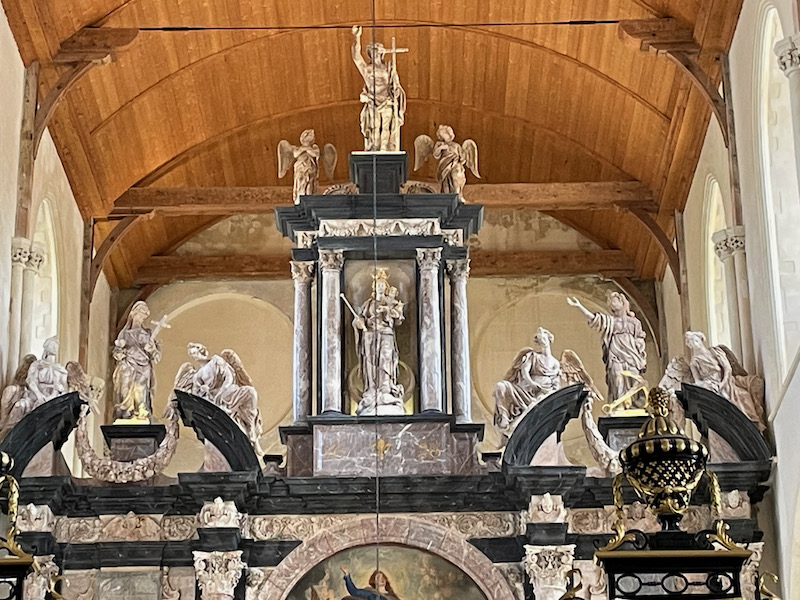
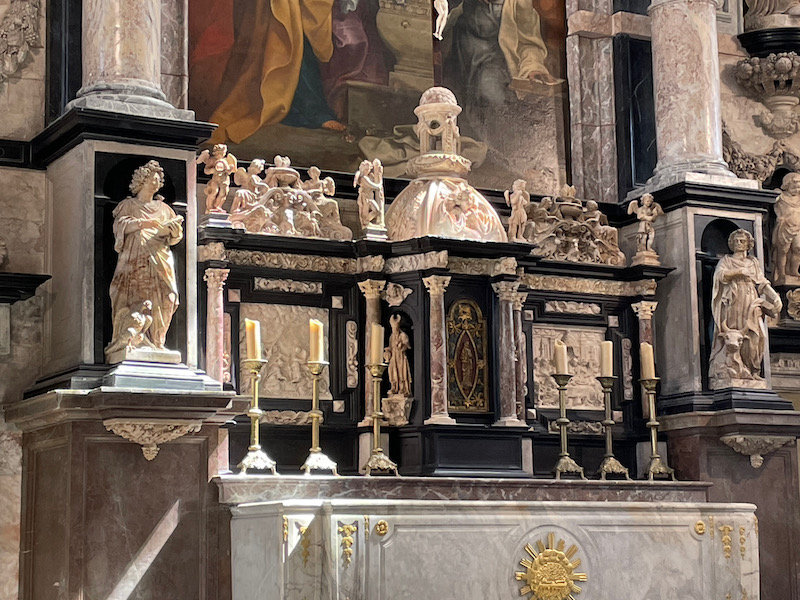
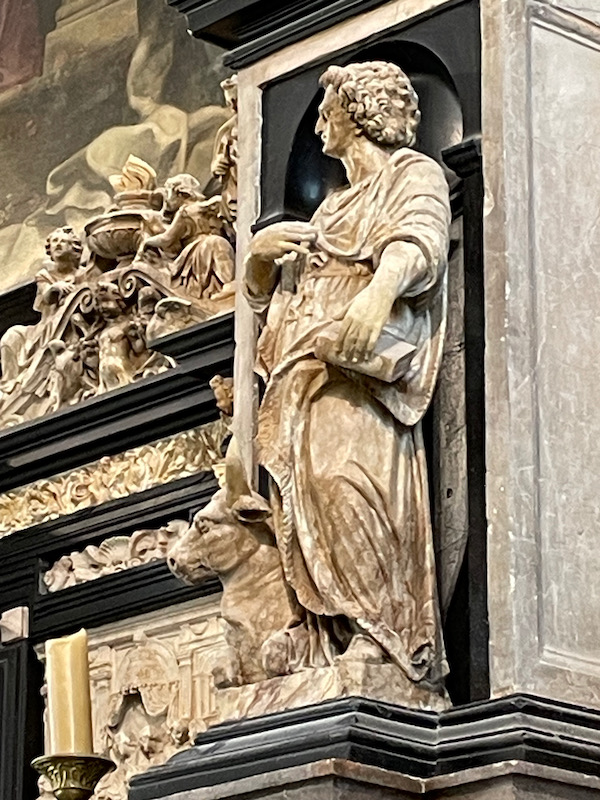
The organ case is currently undergoing restoration work, but they had some of the carved wooden statues from the top of the case at one side of the nave.


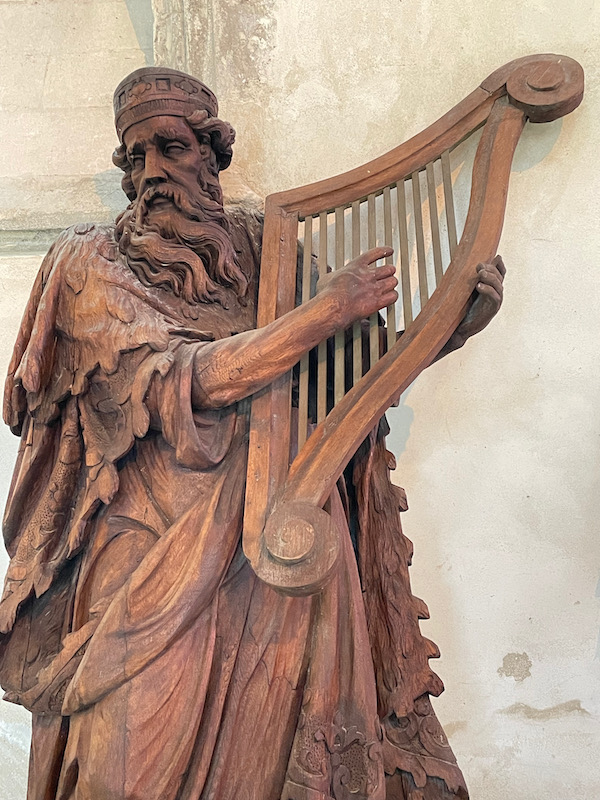
In 2006, the sculpted group representing the Entombment, dating from the end of the 16th century, was moved from the nave to a niche in the south arm of the transept after a restoration. The dead Christ, lying on a stone tomb, is surrounded by Mary, Saint John, Saint Mary Magdalene a woman carrying a pot, Nicodemus and Joseph of Arimathea standing at the ends. During this restoration of the limestone statues, there were traces of color indicating that initially, these were painted.
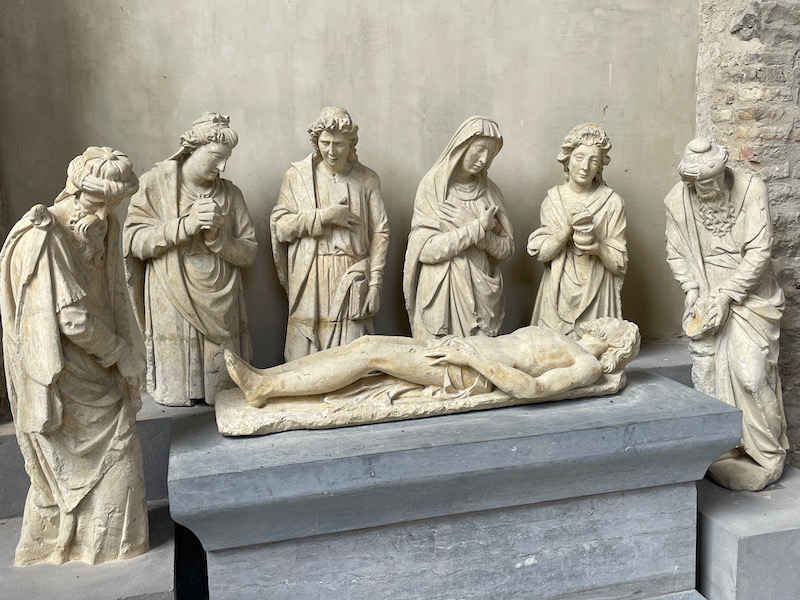
The statue of Saint George slaying the dragon, done in the 16th century, is sculpted wood with a metal sword.
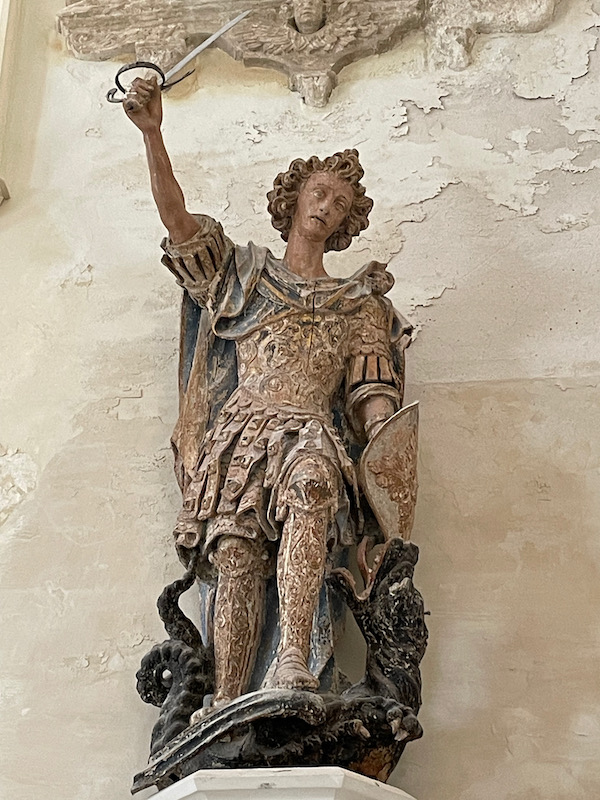
The Chapel of the Virgin (sometimes called the Marian Chapel) was built between 1631 and 1635 in an elliptical shape. The interior decor is very different from the rest of the church, with the walls and dome decorated with stuccoes in the French classical style.
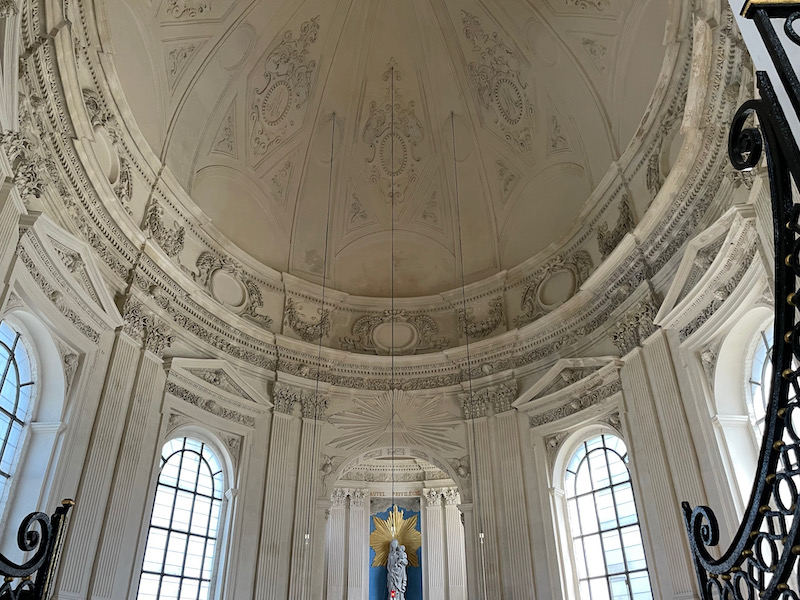
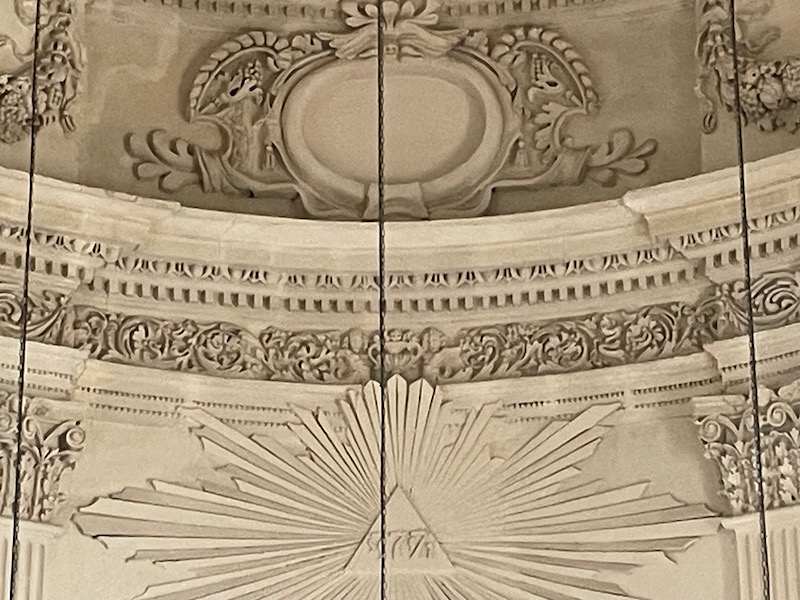
In 1691, King Louis XIV ordered the construction of the Royal Cistern, which could hold about 400,000 gallons of water. Rainwater from the roof of the Église Notre-Dame would collect here and it would be used for the military and the population during times of drought.
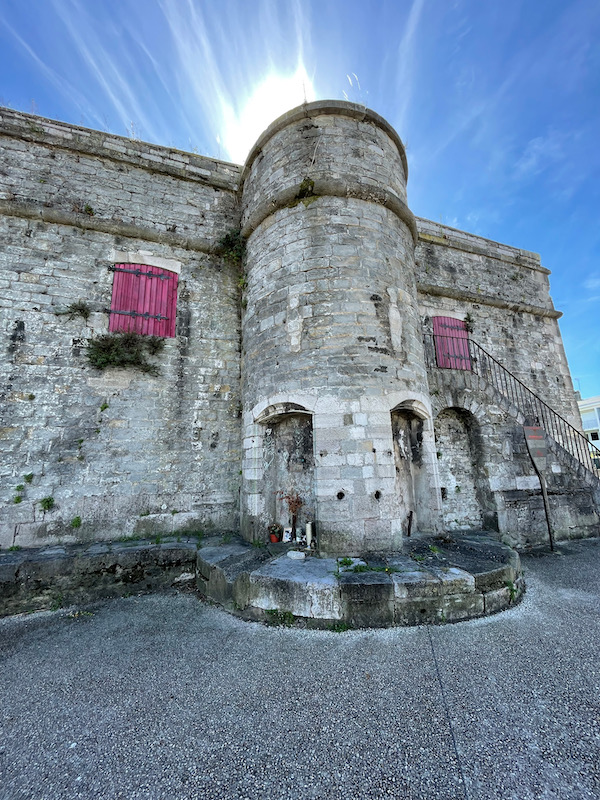
The Tudor Garden is named for the Tudor dynasty that ruled over Calais from 1485-1603. On one side, there are a set of these interesting figurines of beasts, each holding a flag.
